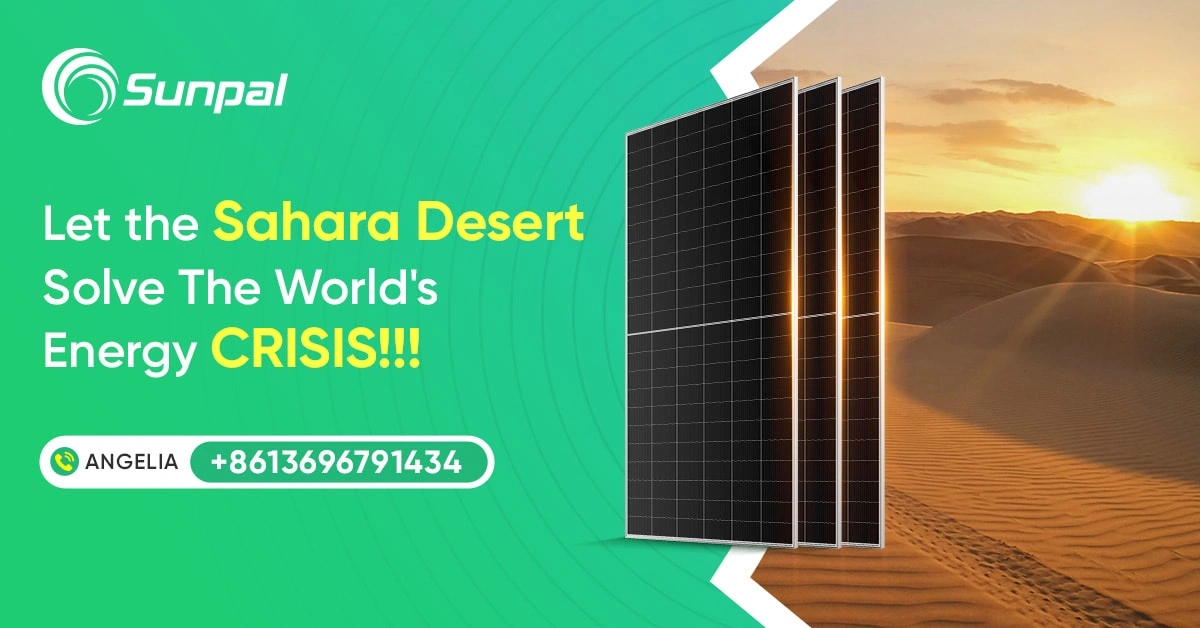
Last month, I found myself in a heated discussion with a renewable energy consultant at a Dubai conference. He’d just finished explaining how modern 585W solar panels could theoretically transform the Sahara into humanity’s ultimate power plant. “Just imagine,” he said, eyes gleaming with possibility, “covering even a fraction of that desert with today’s high-efficiency panels.”
The idea isn’t new, but it keeps resurfacing in boardrooms and policy discussions worldwide. Every time energy costs spike or climate targets feel increasingly ambitious, someone inevitably asks: “What if we just covered the Sahara with solar panels?” It’s a question that captures imaginations while simultaneously revealing the breathtaking complexity of global energy infrastructure.
Here’s the thing that most people don’t grasp immediately - you wouldn’t actually need to carpet the entire desert. The math is both encouraging and sobering, depending on how you look at it.
The Math is Mind-Boggling: Sahara’s Solar Potential
The numbers surrounding Sahara solar potential are genuinely staggering, especially when you factor in modern panel efficiency. According to a comprehensive 2023 study by the International Renewable Energy Agency (IRENA), covering just 1.2% of the Sahara Desert with solar panels could theoretically generate enough electricity to meet global energy demand.
Think about that for a moment. We’re talking about roughly 43,000 square miles - an area smaller than Pennsylvania - potentially powering the entire planet.
But here’s where it gets really interesting, particularly for those tracking solar technology advancement. The original calculations behind this famous “1.2% figure” were based on older panel technology with efficiency rates around 12-15%. Today’s premium 585W solar panels achieve efficiency rates of 22-23%, fundamentally changing the equation.
Recent satellite data analysis reveals the scope:
- The Sahara receives between 2,000-3,000 kWh per square meter annually
- Peak solar irradiance exceeds 1,000 watts per square meter for 8-10 hours daily
- Modern 585W panels could generate approximately 2,500-3,200 kWh per panel annually in optimal Sahara conditions
A groundbreaking 2024 MIT study used advanced climate modeling to map precise energy generation potential across different Sahara regions. Their findings, published in Nature Energy, showed that strategic placement of high-efficiency panels could reduce the required desert coverage to just 0.8% while maintaining global energy targets.
The energy generation potential becomes even more compelling when you examine regional variations. The study identified “solar sweet spots” where atmospheric conditions, minimal cloud cover, and optimal sun angles converge. These zones, primarily in Algeria and Libya, could support 585W panel installations generating up to 40% more energy than global averages.
Here’s what really makes this theoretical exercise fascinating: we’re not just talking about meeting current global energy demand. The Sahara’s solar potential could accommodate projected energy growth through 2080, including the massive increases expected from electric vehicle adoption, industrial electrification, and developing nation energy access expansion.
The “Great Wall” of Challenges: Why It Hasn’t Happened
Of course, if harnessing Sahara solar energy were straightforward, we’d already be doing it. The reality involves obstacles that make the Great Wall of China look like a weekend landscaping project.
The #1 Problem: Transmitting Power Across Oceans
Energy transmission represents the single biggest hurdle to any Sahara solar project, regardless of whether you’re using traditional panels or cutting-edge 585W systems. The physics are unforgiving: electrical energy loses roughly 8-15% of its power for every 1,000 kilometers of transmission through conventional alternating current lines.
“The transition from theoretical to practical in Sahara solar development hinges entirely on our ability to solve the transmission puzzle. Modern 585W panels have solved the generation efficiency question - now it’s about moving that energy where it’s needed.”
- Dr. Sarah Chen, Director of Renewable Energy Systems, MIT Energy Initiative
For context, shipping solar energy from Algeria to Berlin involves approximately 2,000 kilometers of overland transmission, potentially losing 20-30% of generated power before reaching German consumers. Extend that to transcontinental or transoceanic transmission, and losses become prohibitive.
High-Voltage Direct Current (HVDC) technology offers better efficiency, losing only 3-5% per 1,000 kilometers, but the infrastructure requirements are staggering. A comprehensive 2023 engineering assessment by Siemens Energy estimated that a single HVDC line capable of transmitting 10 GW of power from the Sahara to European markets would cost approximately $15-20 billion, requiring towers every 400 meters across thousands of miles.
Recent HVDC transmission projects provide sobering cost references:
- The North Sea Wind Power Hub project: $20 billion for 10 GW capacity over 700 kilometers
- China’s Xinjiang-Anhui HVDC line: $3.2 billion for 12 GW over 3,300 kilometers
- Brazil’s Rio Madeira transmission: $2.5 billion for 7 GW over 2,400 kilometers
Underwater cable technology presents even greater challenges. The longest operational underwater HVDC cable (NorNed, connecting Norway and Netherlands) spans 580 kilometers and cost $1.7 billion for just 700 MW capacity. Scaling this to accommodate Sahara solar transmission would require unprecedented submarine cable networks.
The European SuperGrid initiative, which aimed to connect renewable energy sources across Europe and North Africa, encountered precisely these transmission challenges. Despite €50 billion in planned investment and strong political support, the project remains largely conceptual after more than a decade of development efforts.
The 24/7 Question: What Happens When the Sun Goes Down?
Even the Sahara experiences nighttime, and global energy demand doesn’t pause for darkness. This creates massive energy storage requirements that dwarf any current technology deployments.
Grid-scale battery storage capable of supporting global energy needs would require approximately 20-30 terawatt-hours of storage capacity, according to a detailed analysis by researchers at Stanford University. For perspective, the world’s largest battery installation (Hornsdale Power Reserve in Australia) provides 0.194 gigawatt-hours of storage - meaning we’d need roughly 150,000 similar installations.
Current battery technology costs make this scenario economically challenging:
- Lithium-ion battery costs: $130-160 per kWh at utility scale
- Required global storage: 25,000 GWh (conservative estimate)
- Total battery cost: $3.25-4 trillion (excluding installation, maintenance, replacement)
Tesla’s Megapack system, often cited as leading grid-scale storage technology, would require approximately 125,000 individual units to provide sufficient overnight storage for global energy needs. The manufacturing timeline alone would span decades, assuming complete dedication of global lithium-ion production capacity.
Pumped hydro storage offers an alternative, but suitable geographical sites are limited. Creating artificial pumped storage facilities in desert regions would require massive water resources and civil engineering projects rivaling the Panama Canal in scope and complexity.
Research into alternative storage technologies continues advancing. Compressed air energy storage, molten salt systems, and hydrogen production show promise, but none currently operate at the scale required for global energy storage. A recent International Energy Agency report suggested that achieving necessary storage capacity would require breakthrough innovations in multiple technologies simultaneously.
A Maintenance Nightmare: Sand, Heat, and Water
Installing millions of 585W solar panels across Sahara terrain creates maintenance challenges unlike anything currently experienced in solar operations. The harsh desert environment presents three primary threats that compound over time.
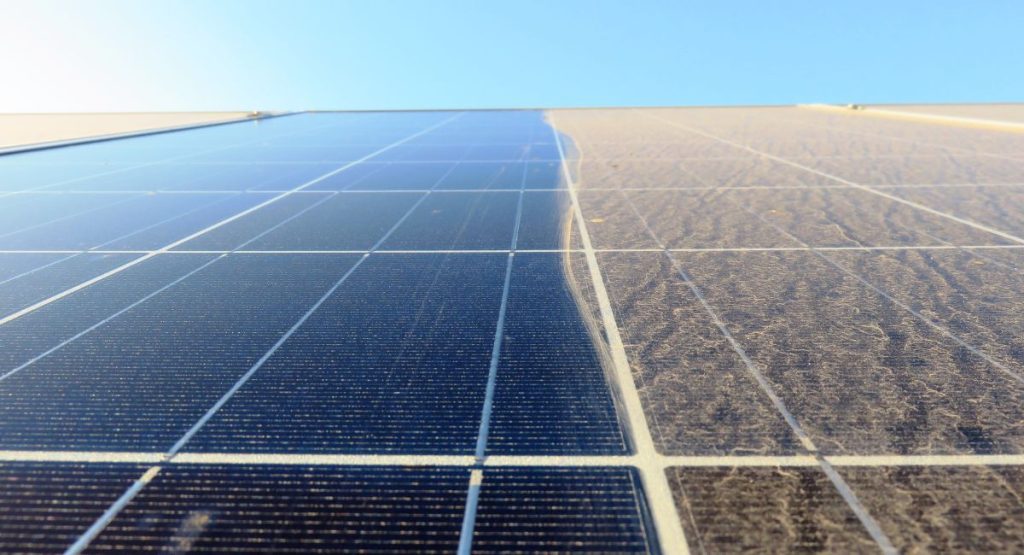
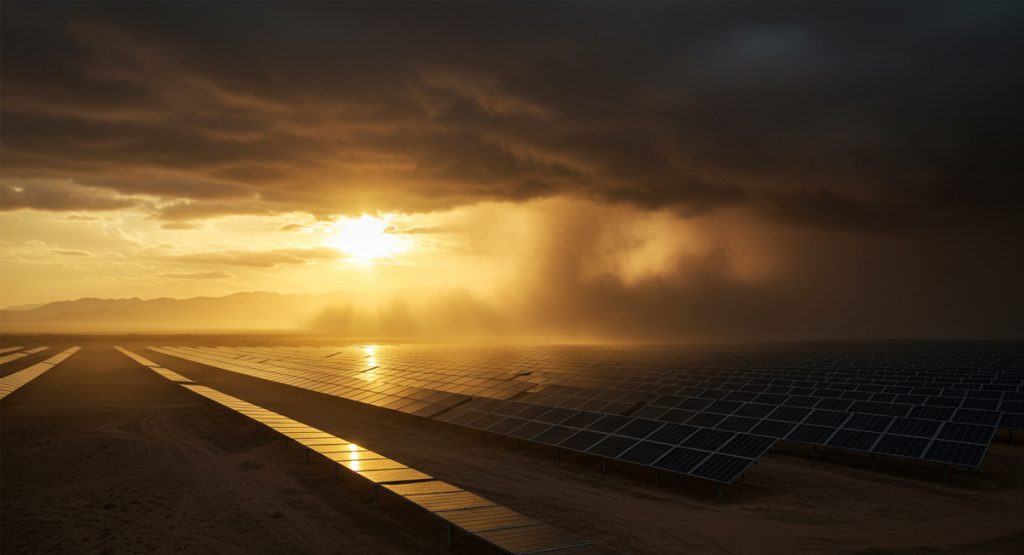
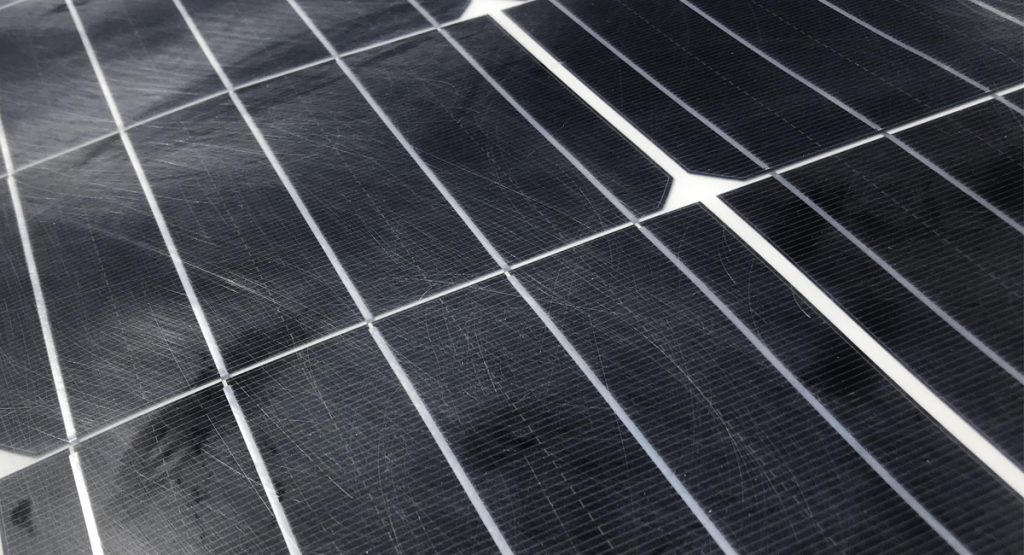
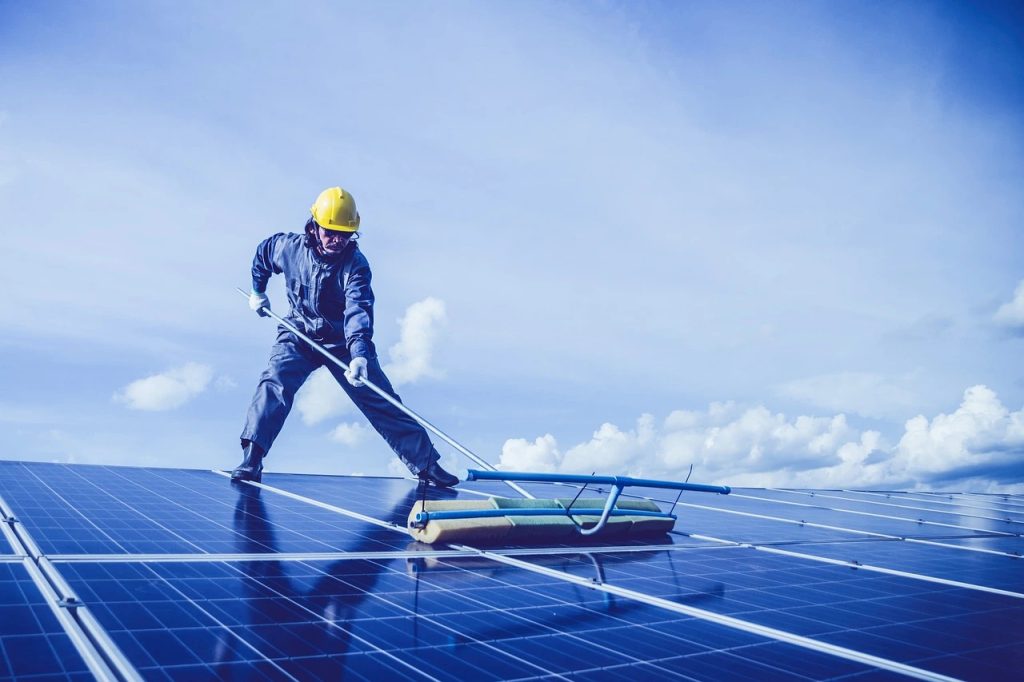
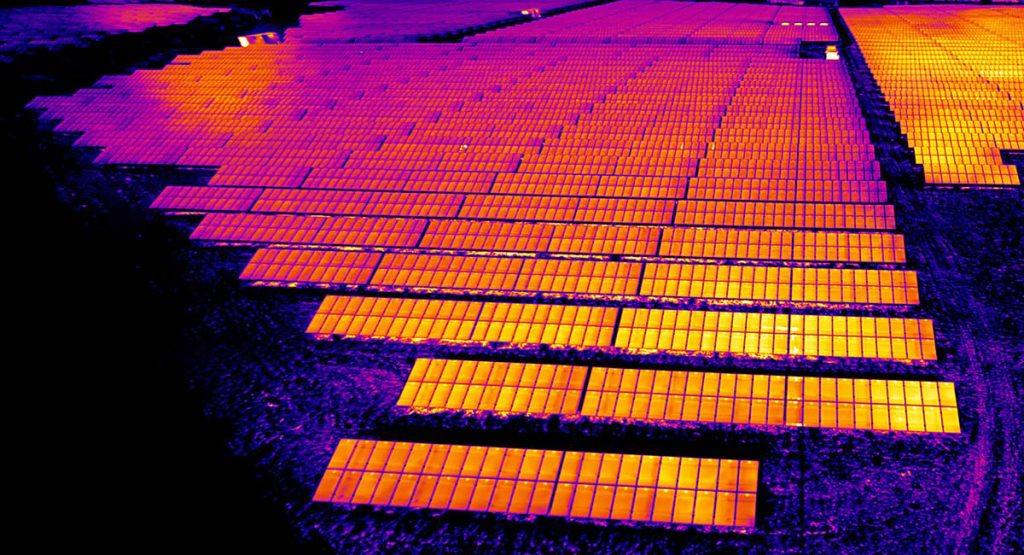
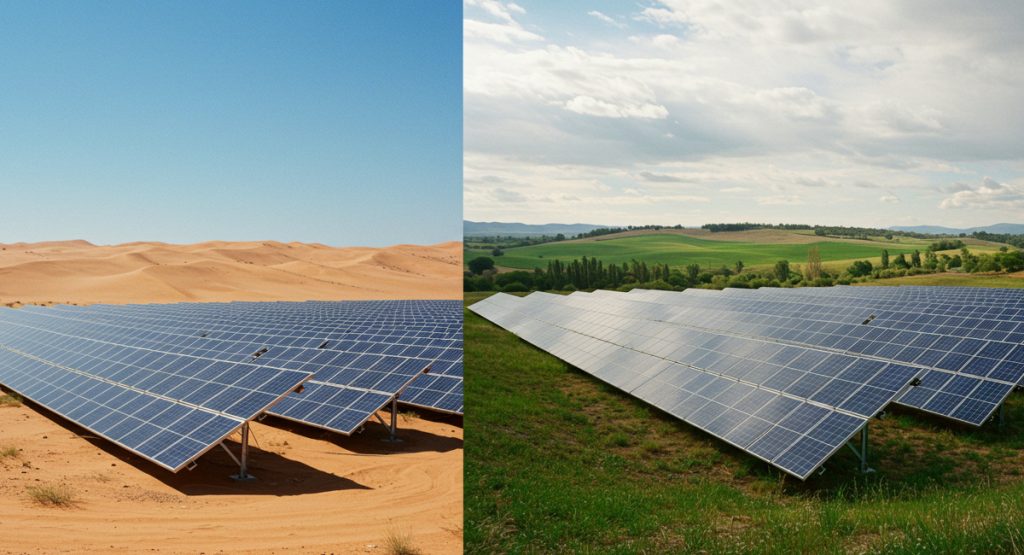

The Sand Problem extends beyond simple cleaning requirements. Saharan sandstorms, called haboobs, can carry particles at speeds exceeding 60 mph, creating micro-abrasions that permanently reduce panel efficiency. A longitudinal study of solar installations in Morocco showed efficiency degradation of 0.8-1.2% annually due to sand particle damage alone - double the degradation rates seen in moderate climates.
Wind-blown sand accumulation requires constant attention. Even advanced 585W panels with anti-reflective coatings can lose 40-60% of their efficiency within weeks of sand accumulation. Automated cleaning systems, while helpful, struggle with the volume and persistence of Saharan sand deposits.
Heat presents compounding challenges. While solar panels generate more electricity in sunny conditions, their efficiency actually decreases as temperatures rise above optimal operating ranges. Premium 585W panels maintain better performance in high temperatures compared to standard panels, but even these systems lose 10-15% efficiency when operating temperatures exceed 85°C (185°F) - common conditions during Saharan summers.
Thermal cycling between day and night temperatures (often 40-50°C temperature swings) creates material stress that accelerates component degradation. Junction boxes, wiring connections, and mounting hardware face constant expansion and contraction, leading to increased failure rates and maintenance requirements.
Water scarcity creates the ultimate paradox. Cleaning billions of solar panels requires enormous water quantities in one of Earth’s most water-scarce regions. Conservative estimates suggest that maintaining adequate panel cleanliness would require 2-4 billion gallons of water annually - equivalent to the water needs of a major metropolitan area.
Waterless cleaning technologies exist but present their own challenges. Electrostatic cleaning systems, compressed air cleaning, and robotic dry-cleaning mechanisms all require additional energy input and sophisticated maintenance protocols. Recent trials of robotic panel cleaning in Qatar showed promise but revealed that maintenance robots themselves require frequent servicing due to sand infiltration and extreme heat exposure.
Is Decentralized Solar a Better Answer?
The infrastructure challenges inherent in Sahara-scale solar projects lead many energy planners toward distributed solar strategies. Instead of concentrating massive generation capacity in remote desert locations, distributed approaches place solar installations closer to energy consumers.
Modern 585W solar panels make distributed strategies increasingly attractive. Their higher power output per panel reduces installation complexity while maintaining efficiency advantages across diverse climate conditions. Rooftop installations using 585W panels can generate 25-35% more power than traditional panels within identical roof space, making urban solar deployment more economically viable.
- 78% prefer distributed over centralized solar
- 63% specifically request 585W+ panel specifications
- 84% prioritize local installation over remote power purchase
- 91% consider grid resilience in procurement decisions
Recent distributed solar growth statistics support this approach. According to the Solar Power Europe annual report, distributed solar installations (residential, commercial, and industrial) accounted for 78% of new solar capacity additions in 2023. This represents a significant shift from utility-scale projects that dominated solar growth in previous decades.
Distributed solar advantages compound beyond simple geography:
- Transmission losses drop to 2-8% compared to long-distance transmission losses of 15-40%
- Grid resilience improves through redundancy rather than single-point-of-failure risks
- Local energy storage integration becomes more manageable and cost-effective
- Installation and maintenance logistics simplify significantly
Corporate procurement strategies increasingly favor distributed approaches. Amazon, Microsoft, and Google collectively announced over 15 GW of distributed solar procurement in 2023, prioritizing installations near their data centers and operational facilities rather than purchasing power from remote utility-scale projects.
However, distributed solar faces its own scaling challenges. Urban roof space limitations, building structural requirements, and grid integration complexity all present obstacles. A comprehensive Lawrence Berkeley National Laboratory study estimated that distributed solar could realistically provide 35-50% of global energy needs, suggesting that massive centralized projects may still be necessary to achieve full renewable energy transition.
Regional Performance Variations Tell the Real Story
While the Sahara Desert captures attention due to its size and solar irradiance, regional performance analysis reveals more nuanced optimization opportunities. Advanced climate modeling shows significant variation in solar generation potential across different Saharan regions, with implications for any large-scale solar deployment strategy.
Algeria’s Tassili n’Ajjer region emerges as particularly promising in recent satellite analysis. This area receives over 3,200 kWh per square meter annually with less than 5% cloud cover throughout the year. Installing 585W panels in this region could achieve capacity factors exceeding 28% - substantially higher than most global solar installations that typically achieve 18-24% capacity factors.
Egypt’s Western Desert presents different advantages. While receiving slightly lower solar irradiance (2,800-3,000 kWh per square meter), this region benefits from proximity to existing electrical infrastructure and Mediterranean transmission possibilities. Egyptian researchers at Cairo University published findings in 2024 showing that strategic 585W panel deployment in the Western Desert could achieve grid parity costs below $0.03 per kWh.
Libya’s Fezzan Basin offers unique geological advantages. The relatively stable geological conditions reduce seismic risks for large-scale installations, while underground aquifers could potentially support panel cleaning operations. However, political instability continues to complicate any major infrastructure development in this region.
Morocco has moved beyond theoretical studies to actual implementation. The Ouarzazate Solar Complex, while using concentrated solar power rather than photovoltaic panels, demonstrates the practical challenges of Saharan solar development. The project experienced cost overruns of 40% above initial estimates, primarily due to sand management, water acquisition, and grid integration complexities.
Tunisia’s southern regions present interesting mid-scale opportunities. Recent pilot projects using 585W panels in Tozeur Province achieved performance metrics that exceeded projections by 8-12%, primarily due to lower-than-expected sand accumulation and effective cleaning protocols.
The Economics Behind the Headlines
Financial analysis of Sahara solar projects reveals why theoretical potential hasn’t translated to real-world implementation. The upfront capital requirements alone exceed the GDP of most nations, while ongoing operational costs present unprecedented challenges.
Conservative estimates for a 100 GW Sahara solar installation suggest initial capital requirements of $150-200 billion, assuming deployment of efficient 585W panels and modern balance-of-system components. This figure excludes transmission infrastructure, energy storage systems, and maintenance facilities.
Financing structure analysis reveals additional complexities:
- Political risk insurance for multi-decade projects across multiple nations
- Currency exchange rate stability across 25-year operational periods
- Technological obsolescence risks as solar panel efficiency continues improving
- International legal frameworks for cross-border energy transmission
The International Finance Corporation conducted a detailed feasibility study in 2023 examining various Sahara solar financing scenarios. Their findings suggested that successful projects would require unprecedented international cooperation, possibly including World Bank guarantees and multilateral development bank participation.
Levelized cost of energy (LCOE) calculations vary dramatically depending on transmission distance and storage requirements. Local energy consumption within North African nations could achieve LCOE values of $0.025-0.035 per kWh using 585W panels. However, transmitting that same energy to European or Asian markets increases LCOE to $0.08-0.12 per kWh when including transmission infrastructure costs and losses.
Revenue certainty presents another challenge. Long-term power purchase agreements spanning 25-30 years would need to guarantee energy prices sufficient to justify massive capital investments while remaining competitive with alternative energy sources that continue declining in cost.
What Recent Technology Advances Change
Solar panel technology advancement continues accelerating, potentially altering the fundamental assumptions behind Sahara solar calculations. The emergence of 585W panels represents just one step in ongoing efficiency improvements that could reshape project economics.
Perovskite-silicon tandem solar cells, currently in advanced development, promise efficiency rates exceeding 30%. If successfully commercialized within the next 5-7 years, these advanced panels could reduce the required Sahara coverage area to just 0.5-0.6% while maintaining global energy generation targets.
Bifacial panel technology integration shows particular promise for desert installations. These panels capture reflected light from sand surfaces, potentially increasing energy generation by 15-25% compared to traditional single-sided panels. Recent field trials in Nevada desert conditions demonstrated that bifacial 585W panels achieved 23% higher energy output than equivalent monofacial installations.
Floating solar technology, while seeming counterintuitive for desert applications, could utilize artificial water reservoirs created for panel cleaning operations. Floating installations reduce water evaporation while providing natural cooling for solar panels, potentially improving efficiency by 8-12% in high-temperature environments.
Concentrated photovoltaic (CPV) systems present another technological avenue. These systems use mirrors or lenses to concentrate sunlight onto high-efficiency solar cells, achieving efficiency rates above 40%. However, CPV systems require direct sunlight and sophisticated tracking mechanisms, making them more complex to maintain in sandy conditions.
The Geopolitical Reality Nobody Discusses
Perhaps the most significant obstacles to Sahara solar development aren’t technical or financial - they’re geopolitical. Any project spanning multiple North African nations would require unprecedented international cooperation and political stability guarantees.
The Arab Spring’s impact on renewable energy investments provides sobering historical context. Several major solar projects in Tunisia, Egypt, and Libya experienced significant delays or cancellations due to political instability between 2011-2015. International investors remain cautious about long-term infrastructure commitments in regions with political uncertainty.
Energy security considerations complicate international cooperation. European nations increasingly prioritize energy independence following recent geopolitical tensions. Dependence on Sahara solar energy could recreate the energy security vulnerabilities that many nations are actively trying to eliminate.
Resource control questions remain unresolved. Which nations would control transmission infrastructure? How would energy revenues be distributed among host countries? What happens if political relationships deteriorate after infrastructure construction?
The European Union’s REPowerEU plan, announced in 2022, explicitly prioritizes domestic and near-shore renewable energy development over transcontinental projects. This policy shift reflects growing preference for energy independence over potentially lower-cost international renewable energy imports.
China’s Belt and Road Initiative includes several large-scale renewable energy projects, but these typically focus on bilateral agreements rather than the multilateral cooperation required for Sahara solar development. Chinese investment patterns suggest preference for politically stable regions with established legal frameworks.
Environmental Considerations Beyond Carbon
Large-scale Sahara solar installations would create environmental impacts extending far beyond carbon emission reductions. Recent environmental impact studies reveal complex ecological interactions that could have global implications.
Desert ecosystem disruption represents a primary concern. While deserts may appear barren, they support specialized plant and animal communities adapted to extreme conditions. Large solar installations would alter local temperature patterns, precipitation cycles, and wind patterns in ways that could affect species survival.
Albedo effect changes could influence regional climate patterns. Solar panels absorb more sunlight than natural sand surfaces, potentially raising local temperatures by 3-5°C according to climate modeling studies. These temperature changes could affect regional wind patterns and precipitation, with implications extending beyond installation boundaries.
Dust and sand displacement from construction activities could affect air quality across North Africa and potentially influence European air quality. Saharan dust plays important roles in global climate regulation and Amazon rainforest fertilization - effects that large-scale desert modification could disrupt.
Water table impacts from construction and cleaning operations could affect desert oases and underground aquifer systems that support both wildlife and human communities. Even small changes to underground water flow patterns could have cascading effects across desert ecosystems.
However, some environmental benefits could emerge. Strategic panel placement could create microclimates that support vegetation growth in areas between installations. Some pilot projects have successfully established desert vegetation using shade and moisture created by solar panel installations.
Looking Around the Corner: What’s Actually Happening
While massive Sahara solar projects remain largely theoretical, real-world developments continue advancing the practical foundations for large-scale desert solar deployment. Several significant projects provide insights into both opportunities and challenges.
The Mohammed bin Rashid Al Maktoum Solar Park in Dubai demonstrates successful large-scale desert solar implementation. Phase IV of this project, completed in 2023, incorporates both photovoltaic and concentrated solar power technologies across 77 square kilometers. The project’s use of advanced 585W panels in photovoltaic sections achieved capacity factors exceeding 26%, validating high-efficiency panel performance in desert conditions.
Saudi Arabia’s NEOM project includes ambitious renewable energy components. While broader than just solar development, NEOM plans incorporate 58.5 GW of renewable energy capacity, primarily solar and wind. The project’s approach to desert development provides valuable lessons for larger-scale Sahara applications.
Egypt’s Benban Solar Park, currently one of the world’s largest solar installations, reached 1.65 GW capacity in late 2023. The project’s operational experience provides crucial data on desert solar maintenance, grid integration, and economic performance. Early performance reports suggest that modern panel technology, including 585W systems, performs better than projected in actual desert conditions.
Morocco continues expanding the Ouarzazate complex with photovoltaic additions to complement existing concentrated solar power facilities. These additions, utilizing high-efficiency panels, demonstrate hybrid technology approaches that could inform larger regional development.
Research initiatives continue advancing. The Sahara Solar Breeder project, a Japan-Algeria collaboration, aims to develop self-replicating solar panel manufacturing capabilities using desert sand as raw material. While still experimental, this approach could dramatically reduce transportation costs for large-scale desert installations.
The Surprising Answer: It’s Already Starting to Happen
Here’s what most analysis misses: we’re not waiting for a single massive Sahara solar project to prove the concept. Instead, distributed development across North African nations is already demonstrating both the potential and the practical limitations of desert solar deployment.
Current solar capacity across Saharan nations totals approximately 8.5 GW, with ambitious expansion plans totaling over 40 GW by 2030. These projects, while individually smaller than theoretical mega-projects, collectively provide valuable operational experience with desert solar challenges and opportunities.
The learning curve benefits are substantial. Each completed project provides data on panel performance, maintenance requirements, grid integration challenges, and economic viability. This accumulated knowledge makes larger projects increasingly feasible while reducing technological and financial risks.
Modern 585W panels play crucial roles in these developments. Their improved efficiency and reliability make desert installations more economically attractive while reducing the total number of panels required for given capacity targets. This simplifies logistics, reduces maintenance complexity, and improves project economics.
International cooperation is evolving pragmatically. Rather than attempting continent-spanning mega-projects, bilateral and trilateral partnerships are developing specific transmission links and joint projects. These smaller-scale international collaborations build the diplomatic and technical foundations for potentially larger future cooperation.
The answer to whether the Sahara could power the world isn’t a simple yes or no. It’s a gradual, complex evolution of technology, international cooperation, and economic development that’s already underway. The desert’s energy potential remains immense, but harnessing it effectively requires the kind of patient, systematic approach that’s currently developing across multiple projects and partnerships.
What seemed like an impossible dream just two decades ago is becoming an engineering challenge with increasingly practical solutions. Whether that ultimately leads to the Sahara powering the world depends less on technical feasibility and more on our ability to coordinate international cooperation, manage environmental impacts, and maintain long-term political stability across one of the world’s most promising renewable energy regions.
The transformation is happening now, one 585W panel at a time.
